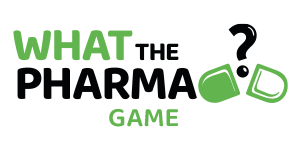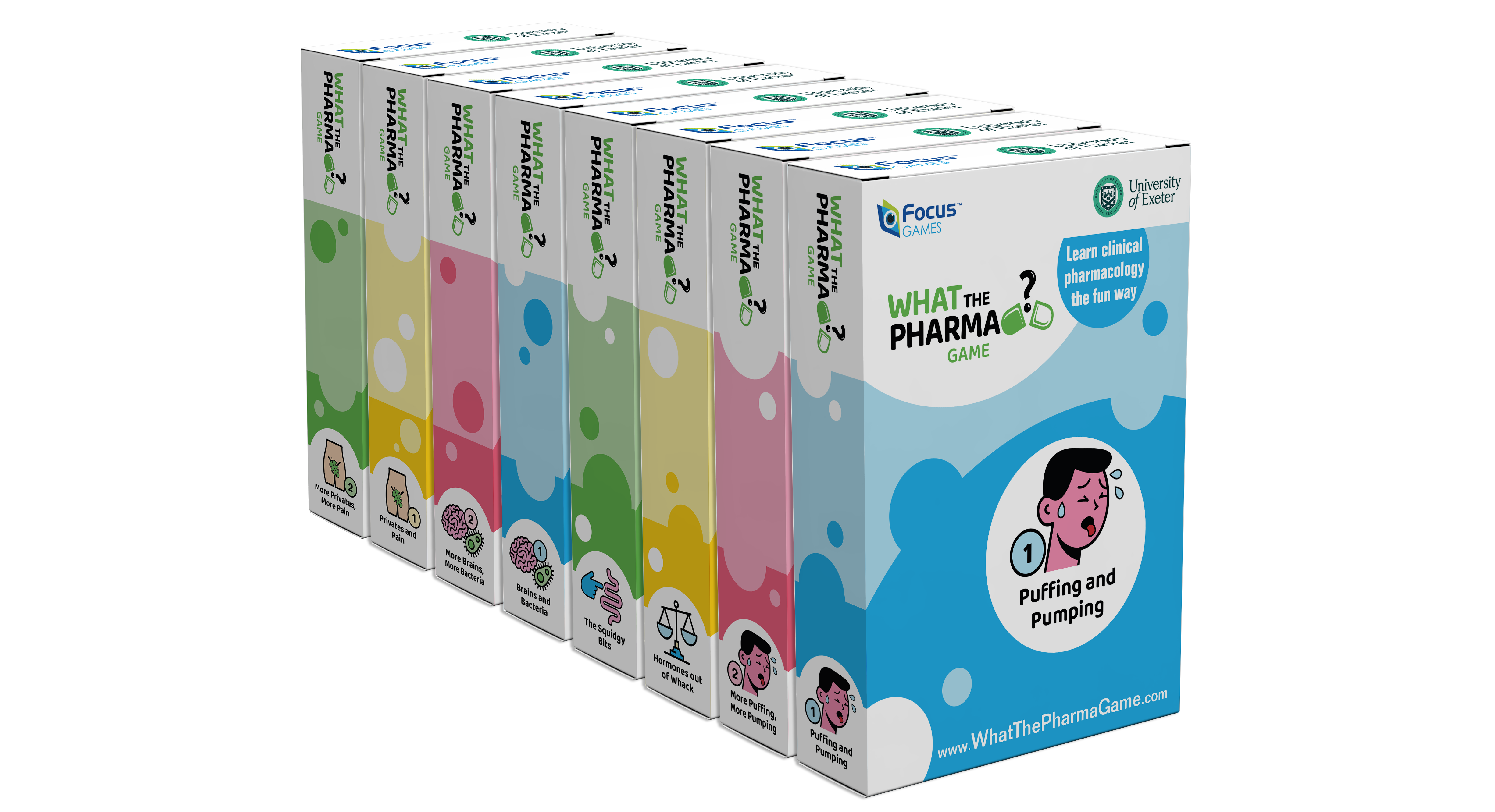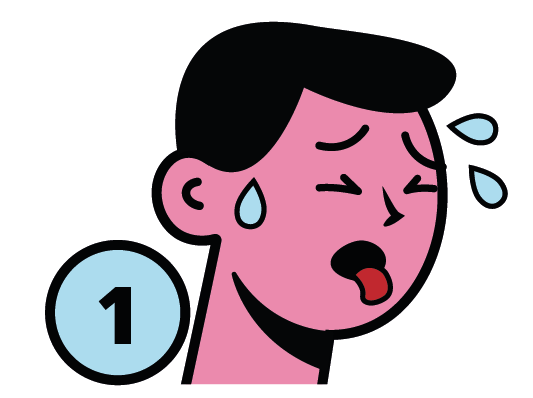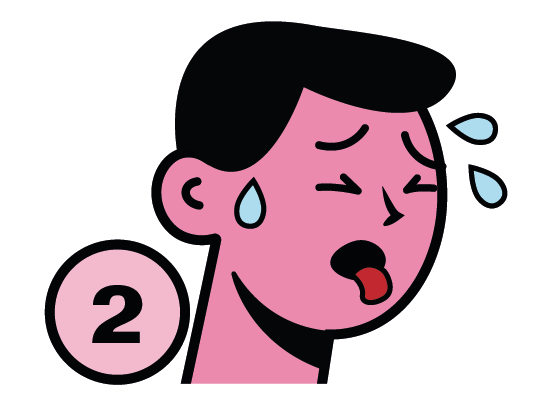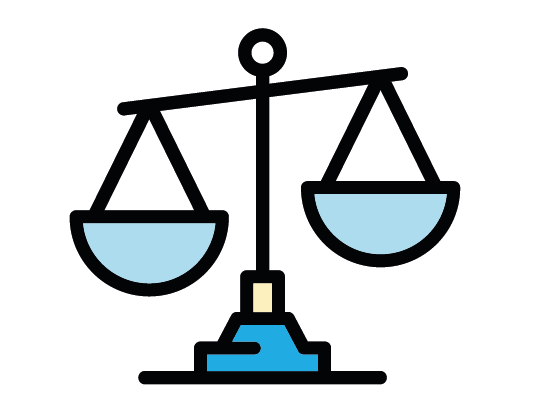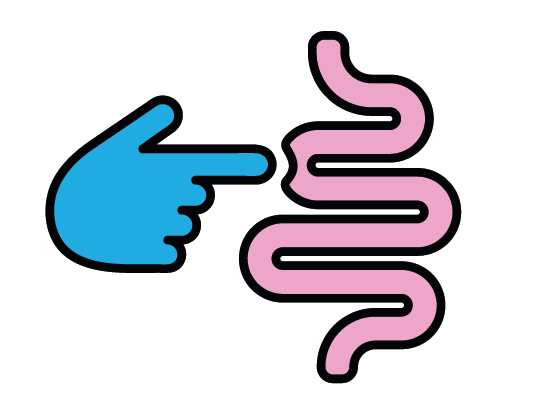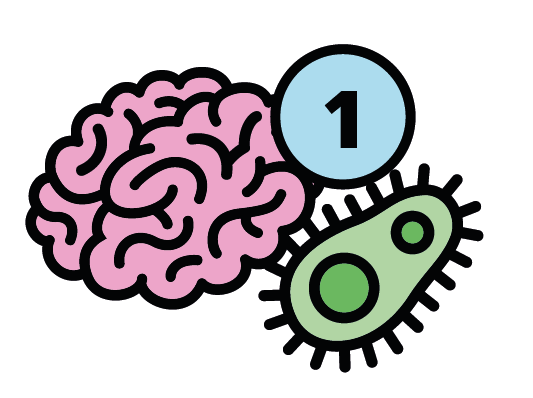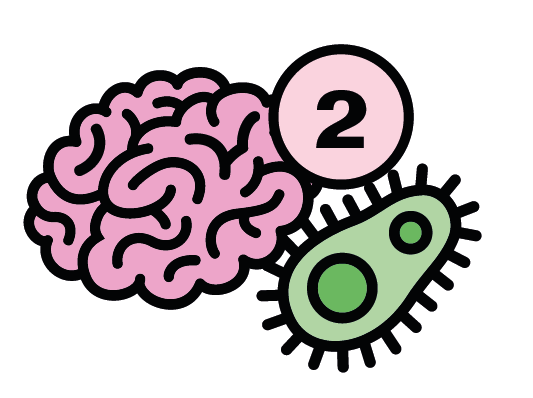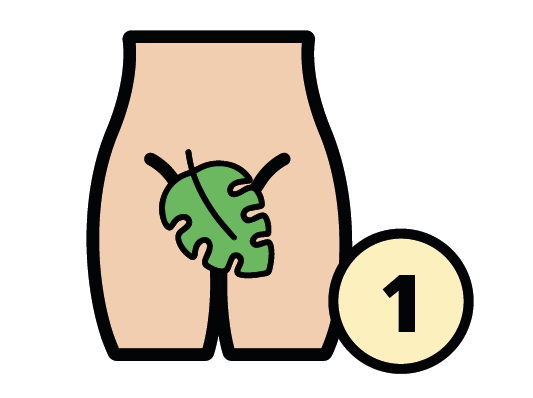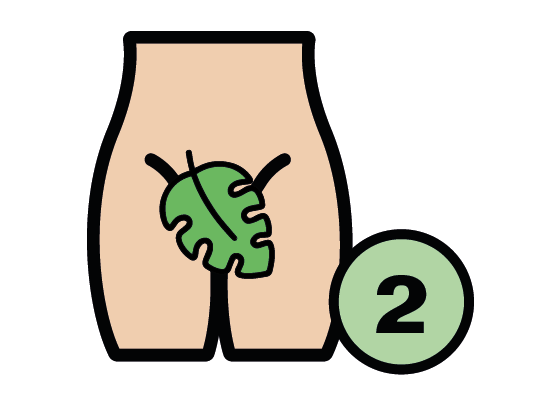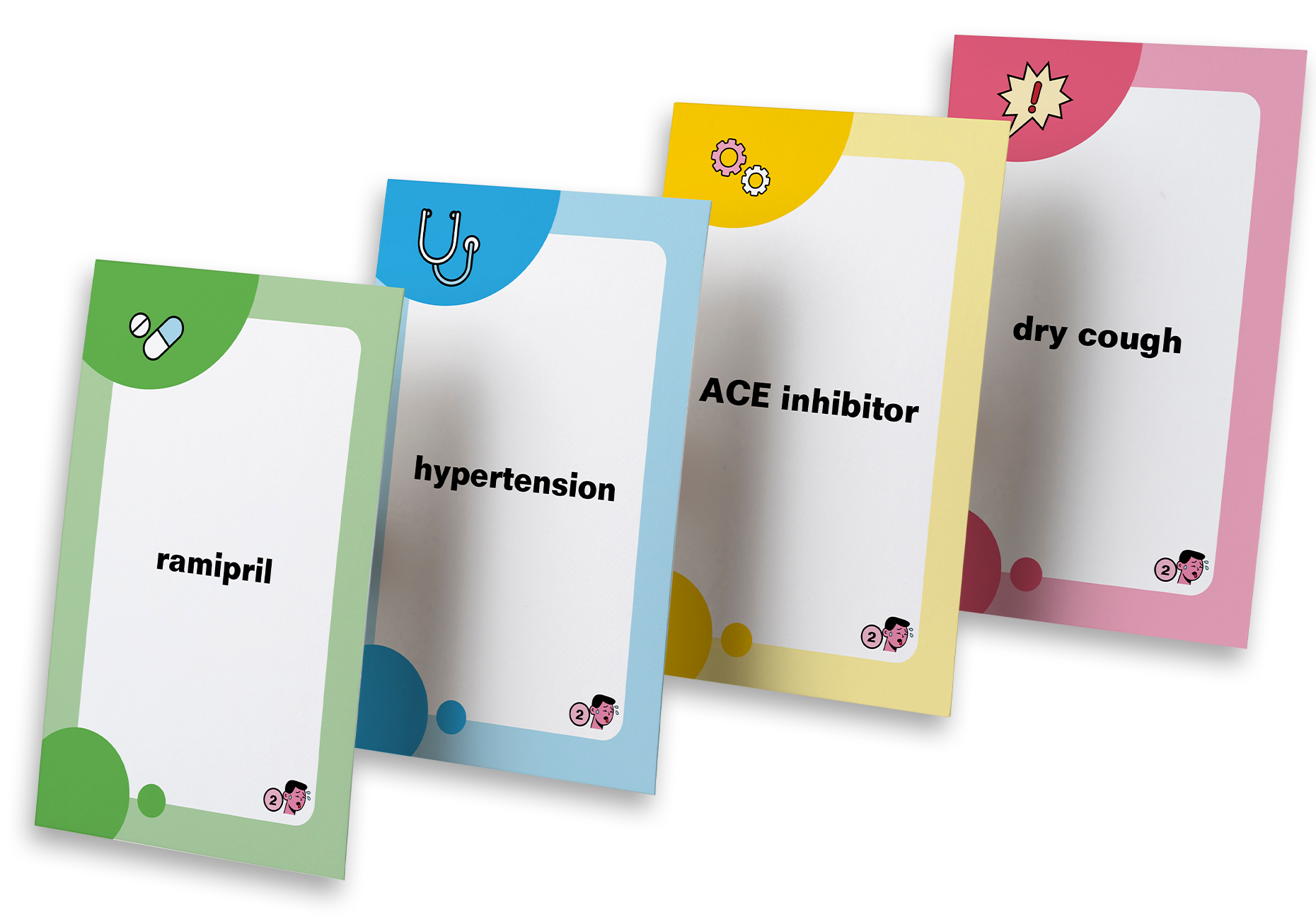Learn clinical pharmacology the fun way
Clinical pharmacology is a subject that many healthcare students and professionals find challenging. There are a lot of drugs, indications, mechanisms and side-effects to memorise and that can make learning dull and difficult. In the workplace, this can lead to wasted time and wrong prescriptions.
Dr. Mark Carew from the University of Exeter Medical School created “What the Pharma?” to take the pain out of learning clinical pharmacology by turning it into a fun, engaging game.
- Simple, fun game that can be played anywhere from a seminar to a coffee break
- 8 card decks, covering everything from brains to bacteria
- Match drugs with their indications, mechanisms of action and side effects to win
- Multiple ways to play – as a group or on your own
8 available decks
There are 8 “What the Pharma?” decks available each covering a different group of 12 drugs. Each deck works as a standalone game or can be combined with any of the others.
Puffing and Pumping:
Includes drugs acting on the cardiovascular and respiratory systems (adenosine, amiodarone, digoxin, atropine, rivaroxaban, warfarin, enoxaparin, aspirin, clopidogrel, bisoprolol, ipratropium, salbutamol)
More Puffing, More Pumping:
More drugs acting on the cardiovascular and respiratory systems (amlodipine, spironolactone, furosemide, indapamide, simvastatin, glyceryl trinitrate, ramipril, losartan, adrenaline, alteplase, fluticasone, montelukast)
Hormones Out of Whack:
Mostly endocrine drugs, with some vitamins and minerals (metformin, alendronic acid, sitagliptin, ethinylestradiol/desogestrel, budesonide, insulin, gliclazide, prednisolone, levothyroxine, canagliflozin, ferrous fumarate, folic acid)
The Squidgy Bits:
Mosty drugs for gastrointestinal, skin, eyes, and ENT conditions (loperamide, hyoscine, senna, mesalazine, lactulose, alginate antacids, omeprazole, hydrocortisone, chlorphenamine, latanoprost, oxygen)
Brains and Bacteria:
Includes drugs for psychiatric and neurological conditions, and a wider range of infectious diseases (venlafaxine, citalopram, amitriptyline, haloperidol, ondansetron, olanzapine, donepezil, metoclopramide, benzylpenicillin, flucloxacillin, piperacillin/tazobactam, doxycycline)
More Brains, More Bacteria:
More drugs for psychiatric and neurological conditions, and a wider range of infectious diseases (risperidone, diazepam, zopiclone, methadone, carbamazepine, cyclizine, sumatriptan, co-careldopa, vancomycin, clotrimazole, aciclovir, ciprofloxacin)
Privates and Pain:
Includes drugs for genitourinary and locomotor conditions, pain relief, drug overdose and some bacterial infections (tamoxifen, allopurinol, naproxen, activated charcoal, codeine, ibuprofen, naloxone, gentamicin, cefalexin, trimethoprim, solifenacin, sildenafil)
More Privates, More Pain:
More drugs for genitourinary and locomotor conditions, pain relief, drug overdose and other bacterial infections (sodium valproate, methotrexate, calcium gluconate, paracetamol, morphine, tramadol, acetylcysteine, clarithromycin, metronidazole, amoxicillin, finasteride, doxazosin)
How does the game work?
“What the Pharma?” is a game for 2-6 players that takes approximately 20-30 minutes to play, with the option to extend gameplay.
Gameplay is simple – if you’ve ever played rummy then you already know the rules. Each “What the Pharma?” card shows a drug, indication, mechanism of action or a side-effect / contraindication, and these can be matched in sets.
For example, rampiril, an ACE inhibitor, is indicated for hypertension with a common side effect of a dry cough. Match cards into these sets to play them. The first person to play all their cards is the winner.
You can also use the cards to play Snap! or Solitaire.


